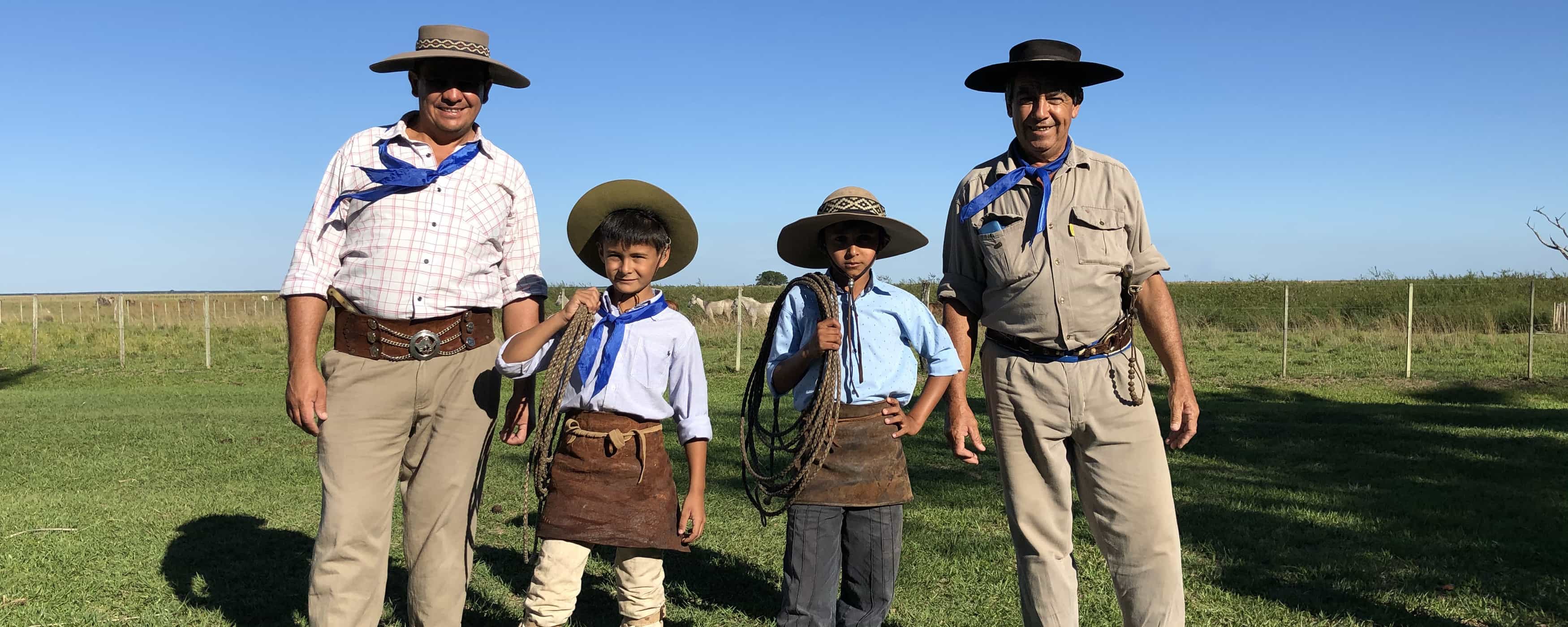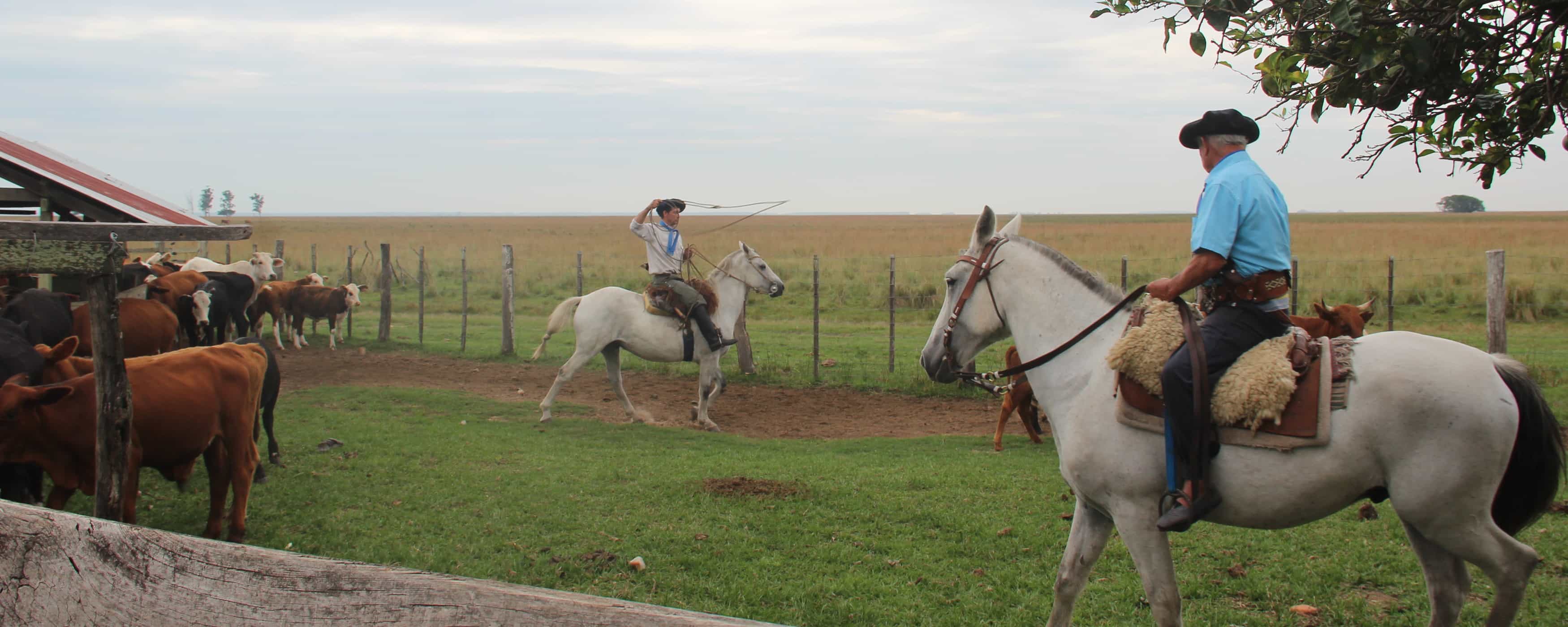

Argentine Culture
The World of the Gauchos
The gaucho is a central symbol of Argentine culture, representing rural life, freedom and resistance. Gauchos, inhabitants of the pampa, were known for their self-sufficiency and their deep relationship with the land. They maintain traditions such as wearing typical clothing, cattle breeding, folk music and the celebration of rural festivals.
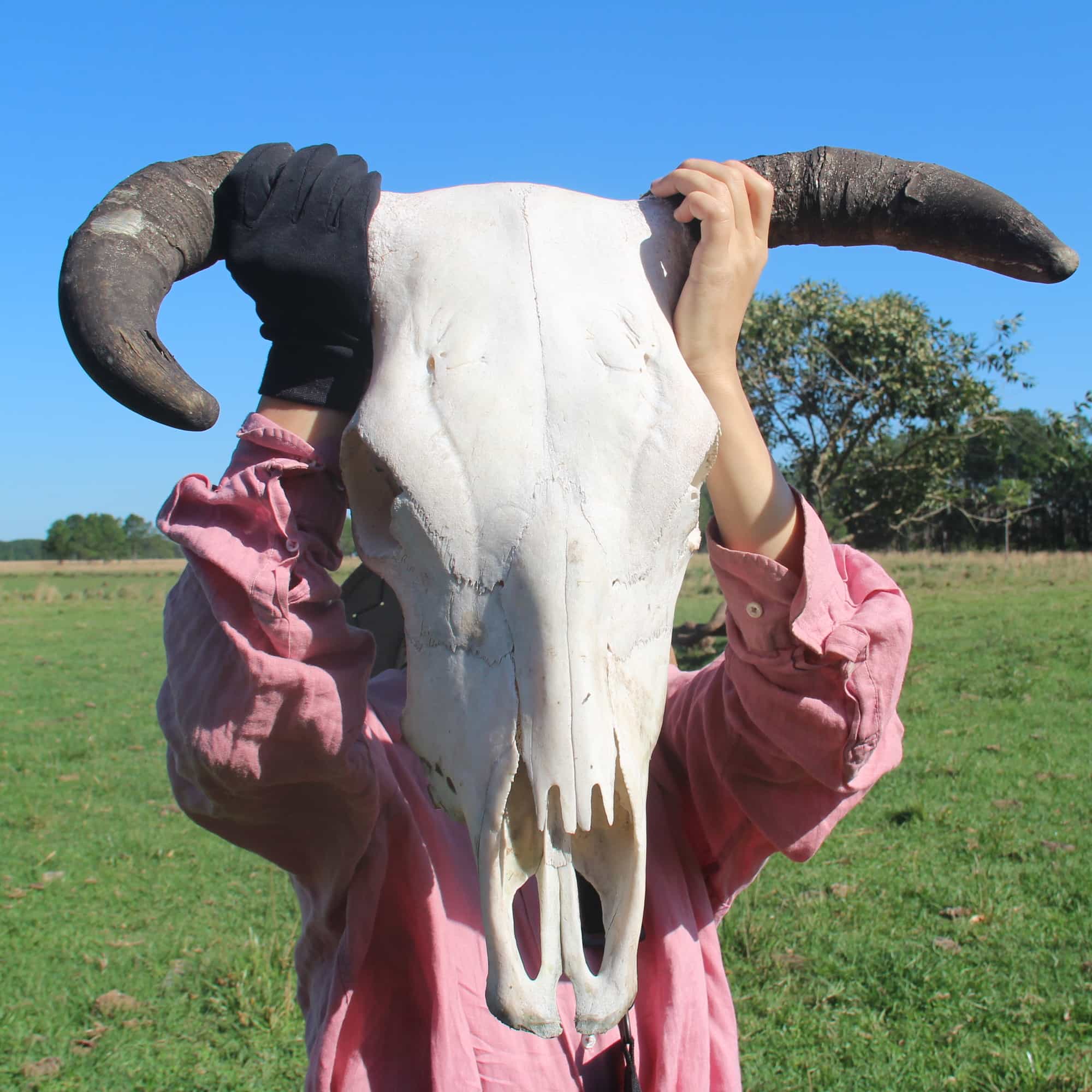
Origin of the gaucho
The first gauchos appeared in the Argentine Litoral at the beginning of the 17th century. These men emerged in close relationship with wild cattle. Moving away towards the countryside, they adopted a nomadic and free lifestyle, subsisting on ownerless wild cattle and what nature offered.
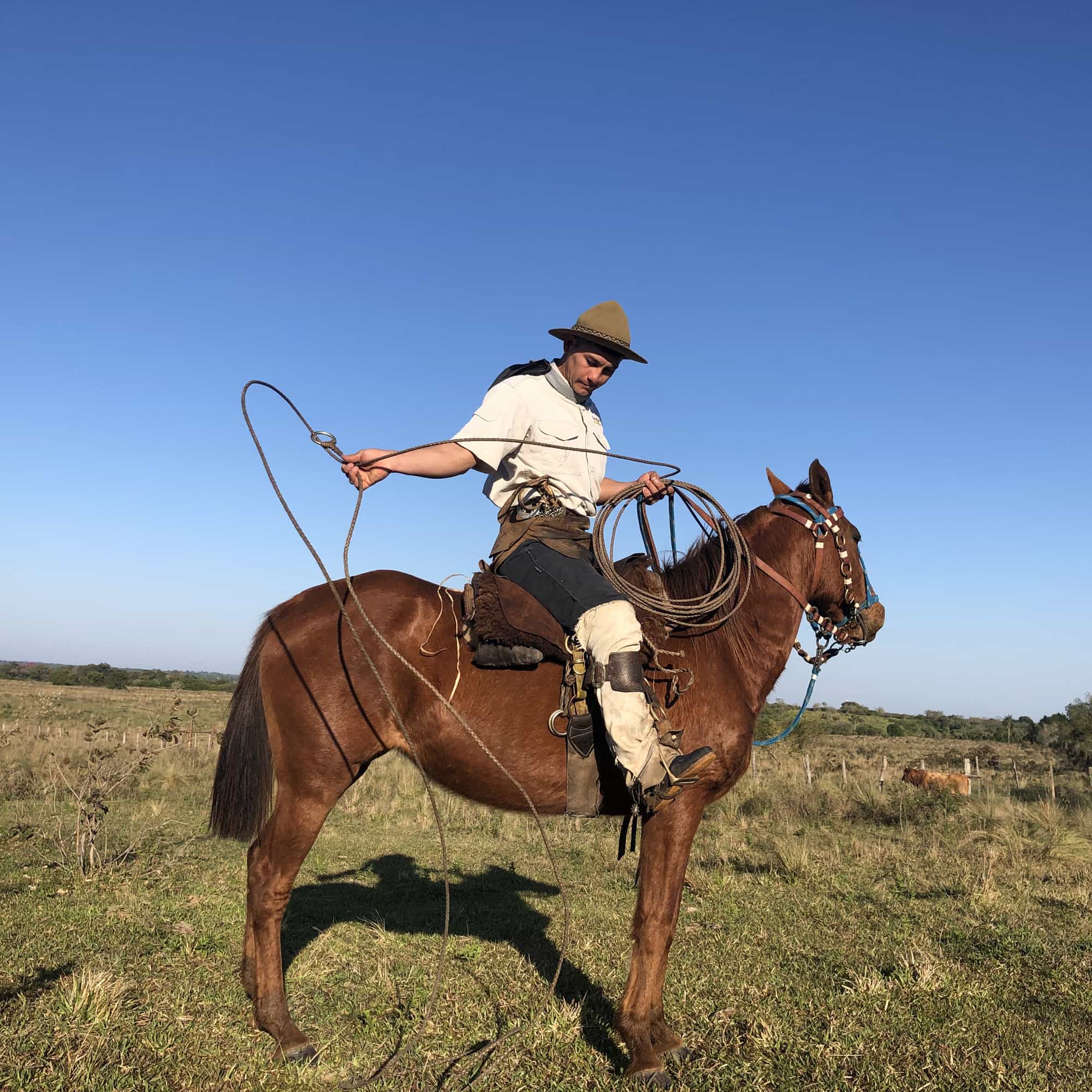
The gaucho's work
The gaucho worked with cattle, such as rodeo and animal breeding, along with artisanal skills such as leather crafting and metal objects.
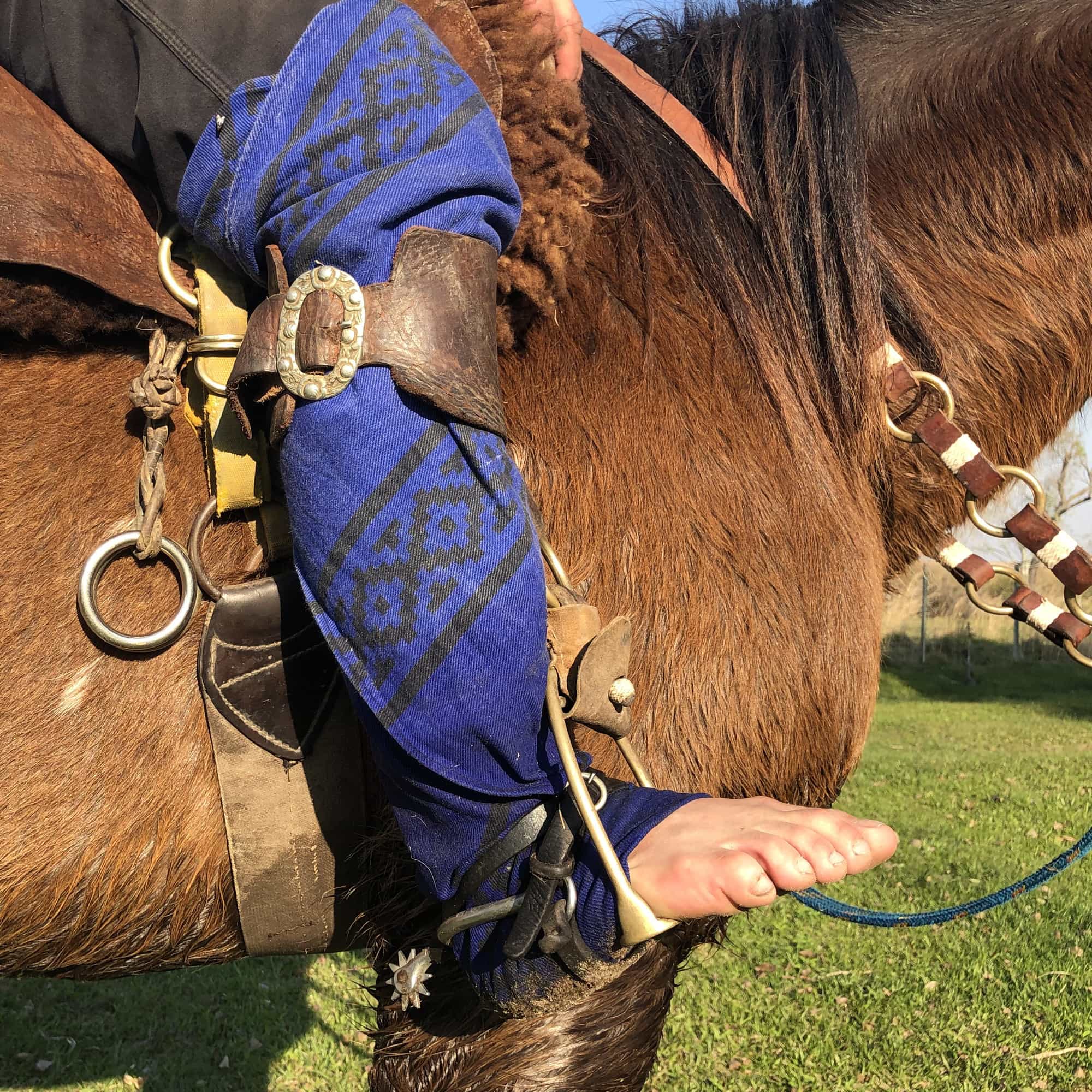
The gaucho folklore
They also enjoy games such as taba, pato and quadreras races, in addition to cultural activities such as payadas and folk music.
Typical Gaucho Objects

The Facón
The facón, beyond being a working tool, was also used as a defensive weapon and constitutes an emblematic element of gaucho culture

The rebenque
The gaucho swings the rebenque above his head to frighten and guide the herds, a gesture often accompanied by shouts and whistles.

The lasso
Fundamental accessory, a braided raw leather of great length used to lasso animals
At the estancia
Estancia Buena Vista works closely with gauchos who participate in the maintenance of horses and their training. We care deeply about preserving this emblematic culture of Argentina and more precisely of the Corrientes region.
